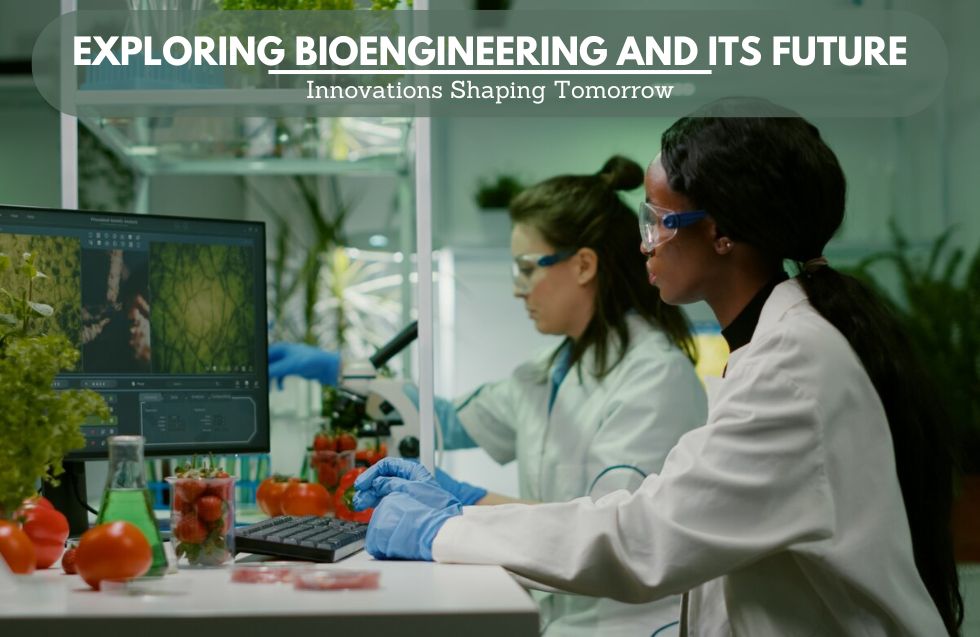Bioengineering, also known as biological engineering, is an interdisciplinary field that combines principles of biology and engineering to develop innovative solutions for healthcare, environmental challenges, agriculture, and more. As a rapidly evolving discipline, bioengineering stands at the forefront of some of the most transformative advancements in science and technology. From creating artificial organs to revolutionizing drug development, the future of bioengineering holds exciting possibilities.
What is Bioengineering?
At its core, bioengineering applies engineering principles to biological systems. It encompasses a wide range of subfields, including tissue engineering, genetic engineering, biomaterials, synthetic biology, and biomedical devices. By leveraging knowledge from both life sciences and engineering, bioengineers work on developing tools, technologies, and systems that improve human health, enhance the environment, and boost productivity in industries like agriculture and pharmaceuticals.
Key Areas of Bioengineering
1. Tissue Engineering and Regenerative Medicine
Tissue engineering aims to repair, replace, or regenerate damaged tissues and organs. Scientists are working on creating lab-grown tissues that can be used to treat injuries, degenerative diseases, or even organ failure. Advances in this area, such as 3D bioprinting, have made it possible to create complex tissue structures that mimic human organs. According to a report by Fortune Business Insights, the global tissue engineering market was valued at $29.23 billion in 2022 and is projected to reach $91.74 billion by 2030, growing at a CAGR of 15.5%.
2. Genetic Engineering and Synthetic Biology
Genetic engineering involves modifying the DNA of organisms to create new traits or capabilities. This has applications in medicine (e.g., gene therapy), agriculture (e.g., genetically modified crops), and environmental management (e.g., bacteria engineered to clean up oil spills). The global synthetic biology market is expected to grow from $7.5 billion in 2021 to $47.8 billion by 2026, with a CAGR of 44.9%, reflecting the increasing interest in this field.
3. Biomedical Devices and Wearable Technology
Bioengineering is responsible for designing life-saving devices such as pacemakers, prosthetics, and advanced imaging tools like MRI machines. The global market for biomedical devices was valued at $522.2 billion in 2021 and is expected to grow to $829.3 billion by 2028, expanding at a CAGR of 7.0% . Wearable technologies, such as fitness trackers and health monitors, are rapidly improving with bioengineering advancements. The global wearable medical device market is anticipated to reach $26 billion by 2027, up from $12 billion in 2020.
4. Biomaterials
Biomaterials are engineered substances that interact with biological systems. From surgical implants to wound healing products, biomaterials are designed to be compatible with the human body. The biomaterials market was valued at $106.57 billion in 2021 and is expected to reach $169.93 billion by 2028, growing at a CAGR of 6.7% . Innovations in this field include smart materials that respond to changes in their environment, such as temperature or pH, to deliver drugs or promote healing.
Emerging Trends in Bioengineering
1. Personalized Medicine
One of the most exciting prospects of bioengineering is its role in the development of personalized medicine. By using genetic information and biomarkers, bioengineers are working on treatments tailored to an individual’s specific biology. The personalized medicine market was valued at $2.4 billion in 2020 and is projected to reach $3.7 billion by 2025, reflecting an increasing demand for customized healthcare solutions.
2. Biofabrication and 3D Bioprinting
3D printing has revolutionized many industries, and bioengineering is no exception. Biofabrication involves the use of 3D printers to create tissues, organs, and even bones using living cells and biomaterials. The global 3D bioprinting market is projected to grow from $1.5 billion in 2022 to $3.5 billion by 2027, with a CAGR of 17.4% . In the near future, bioprinting could enable the mass production of tissues for drug testing and research, ultimately paving the way for printing functional human organs.
3. CRISPR and Gene Editing
The CRISPR-Cas9 gene-editing technology has sparked a revolution in genetic engineering. This tool allows scientists to precisely alter DNA, offering the potential to correct genetic disorders, enhance agricultural productivity, and develop novel medical therapies. The CRISPR technology market is expected to reach $9.2 billion by 2027, up from $3.1 billion in 2021, growing at a CAGR of 18.5%.
4. Sustainable Bioengineering
With climate change and environmental degradation posing significant challenges, bioengineers are exploring ways to mitigate these effects through sustainable solutions. For instance, bioengineering is being used to create biofuels, develop biodegradable plastics, and design microorganisms that can clean up pollutants or capture carbon. The global biofuels market is projected to reach $218.7 billion by 2027, increasing from $136.5 billion in 2020.
The Future of Bioengineering
The future of bioengineering holds immense promise as new technologies and discoveries continue to push the boundaries of what is possible. Some potential breakthroughs include:
- Artificial Organs and Bionic Implants: Advances in tissue engineering and biofabrication could make artificial organs more accessible, while bioengineered prosthetics could be integrated with the nervous system for seamless control.
- Self-Healing Materials: Biomaterials with self-healing properties could be used in medical devices, implants, and even clothing, reducing the need for repairs or replacements.
- Brain-Computer Interfaces (BCIs): BCIs, which allow direct communication between the brain and external devices, could revolutionize the treatment of neurological disorders, enabling patients to control prosthetics, communicate, or even regain lost motor functions.
- Bioengineered Food: With the growing global population, bioengineers are working on developing new food sources, such as lab-grown meat, genetically modified crops, and sustainable farming practices that require fewer resources.
Conclusion
Bioengineering is a dynamic and rapidly evolving field that is set to change the world in profound ways. As researchers continue to explore the intersection of biology and technology, bioengineering will play a pivotal role in addressing some of humanity’s most pressing challenges, from healthcare to environmental sustainability. The future of bioengineering promises innovative solutions that will shape the world for generations to come, offering hope for a healthier, more sustainable future.












